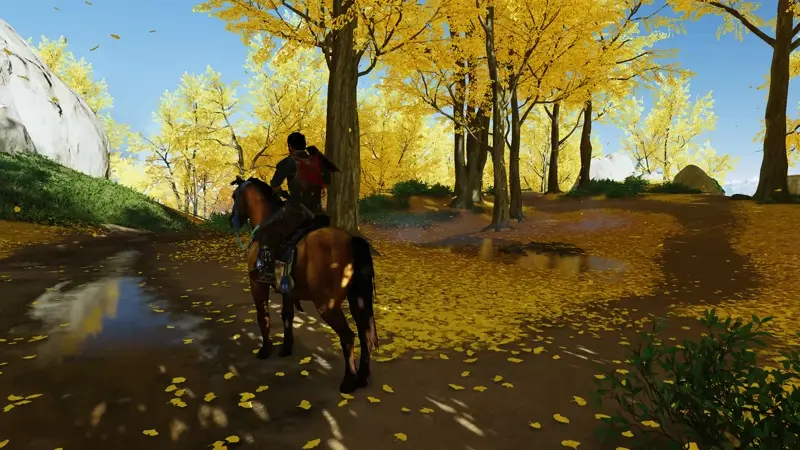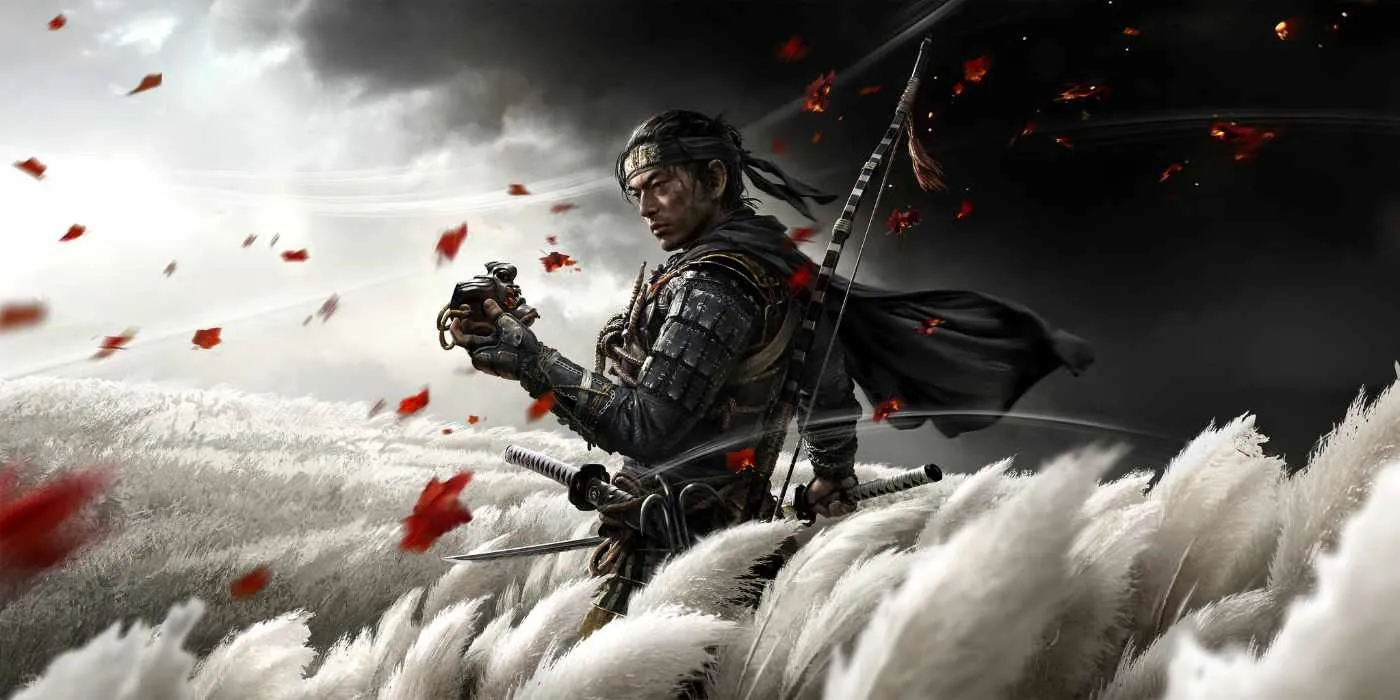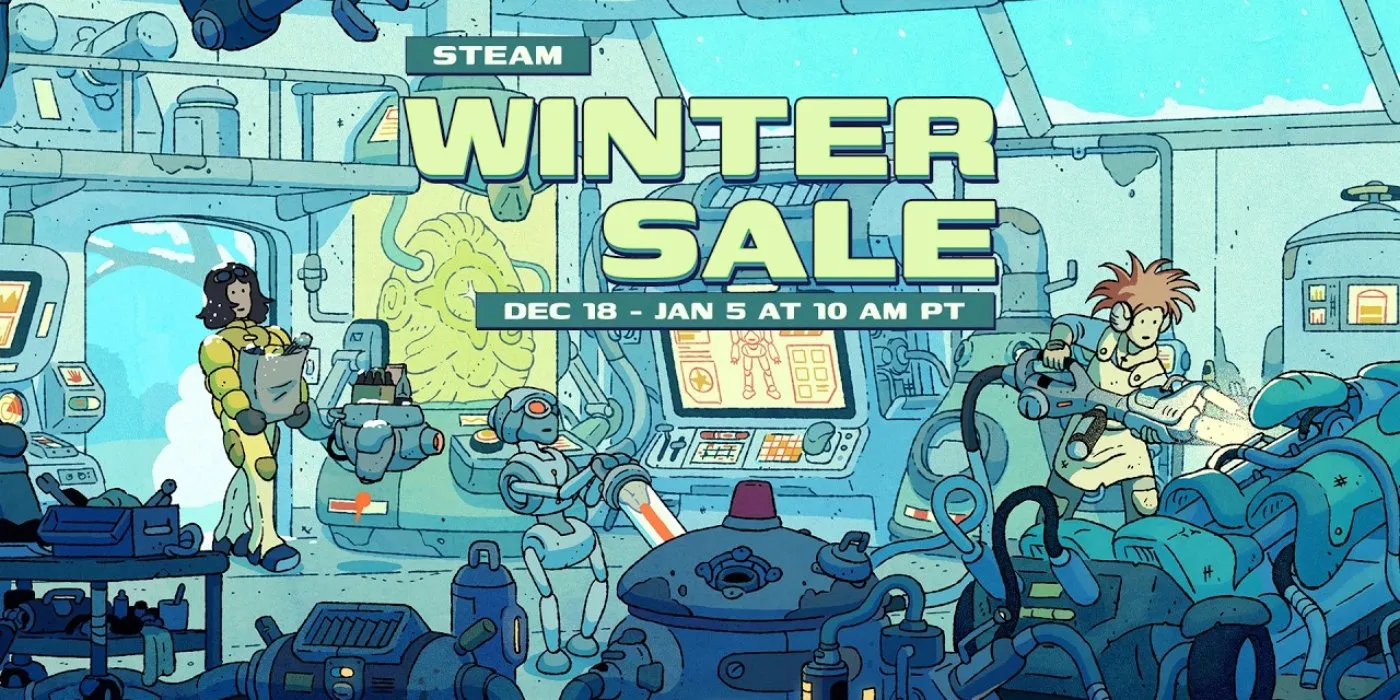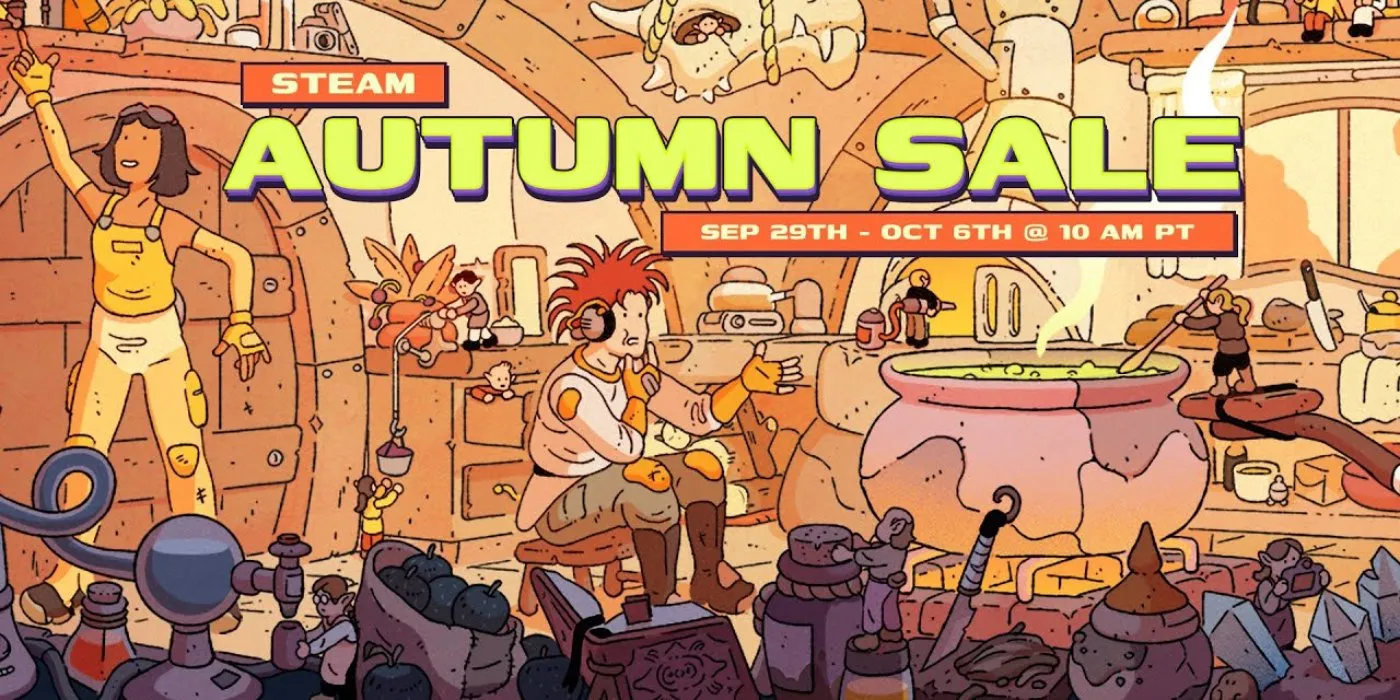Ghost of Tsushima, developed by Sucker Punch Productions and initially released in 2020 for the PS4 has finally been released for PC. This is a review of the game as a whole, not the PC version in particular, but we do talk about the port briefly in the final section.
Will you hold off the Mongolian invasion as you stick to your honorable samurai code? Or will you break it and fully embrace the Ghost? Let's find out!
Story of a Ghost

One of the best title drops ever.
The story of Ghost of Tsushima takes place on the ominous island, during the real-world Mongol invasion of Japan in the late 13th century. Yes, the game is set in a real location during real events, though it should be noted the story of GoT is fantastical, with most, if not all, characters present in the game being the creation of Sucker Punch Studios. The only real historical figure in the game is Mongol leader Kublai Khan, who is only mentioned and doesn't appear in person.
But we're getting ahead of ourselves. The story proper begins with Jin Sakai (our protagonist and playable character), Lord Shimura (his uncle, no first name), and an army of samurai ready to defend Tsushima from the Mongol armada that just set foot on the island, led by Khotun Khan. It doesn't go well, with only Jin and Shimura surviving, with the former being thought dead by the enemies and ignored, while the latter is taken prisoner.

The protagonist, Jin Sakai (left); and the antagonist, Khotun Khan (right)
Eventually, after a flashback that also acts as sword fighting practice, Jin wakes up near a small village that's being attacked by the Mongols. There, it's revealed that he was saved by Yuna, a thief who knows how to sneak around and silently kill her target, skills that lord Sakai will have to learn if he's to survive the upcoming invasion. After a short stealth tutorial, Jin goes to confront the Kahn, and gets thrown off a bridge for his trouble.
He somehow survives that as well, gets back to his horse, and the game gives you a gorgeous title screen as you ride in an open field, also opening up for exploration. So far you've been taught two very important facets of the game, direct combat and stealth, though there's a lot more you'll be able to unlock as the game goes on. There's also a third facet, archery, which you'll be introduced to soon after in a mandatory mission.

Pictures taken moments before things get awesome!
From here, the main objective becomes rescuing Lord Shimura and stopping Kothun Kahn and his forces. The story is nicely paced, taking place over 3 acts and several months. In terms of voice acting, both the Japanese and English versions are very good, with the former being more immersive, although it's quite noticeable that the mo-cap was done in English. Whichever one you pick, the Mongol enemies will still speak their language (usually subtitled), while Japanese enemies will speak in the one you picked.
Where does the Ghost come into all this? Well, that would be spoiling the story, and we don't want to do that, now, do we? We'll also not dwell much on the Iki Island DLC, which adds some extra story and backstory for Jin after the events of the main game. It also contains some new activities and collectibles for you to enjoy, including a lot of references and unlockables inspired by other Sony franchises.
Combat and Exploration
 Aim for the head and pray the helmet doesn't work
Aim for the head and pray the helmet doesn't work
As mentioned, there are 3 main facets to Ghost of Tsushima's gameplay: direct combat, stealth, and archery. All of those elements have a lot of stuff you can unlock during your playthrough, making them more effective in dealing with your enemies. Archery is the one I used the least, save for dealing with other archers while sneaking around, but you can certainly make it your main method of getting things done.
The stealth elements in the game work pretty well, and it's what you expect from most open-world games that implement it. There's tall grass you can hide in, and a variety of tools to help you sneak around and kill your enemies, like poisonous and hallucinogenic darts, or lures that will also poison enemies that get close. Not all of them will be available from the start, of course, and you'll need to upgrade them. Combine them with the arrows, and you should be able to clear a camp of enemies completely unseen.
 Shhh. I'm hunting Mwongols. Hehehehe.
Shhh. I'm hunting Mwongols. Hehehehe.
The combat in the game is done with your sword, and it's one of the most satisfying aspects of the game. It feels very cinematic and responsive, with you needing to be able to anticipate your enemy's movements, parry them, and then go on the counter-attack. There are several stances you'll unlock in the game, each of them dealing with a different type of enemy, and you'll need to swap between them as you face bigger and more varied hordes.
Where the combat really shines is in 1v1 duels. It's just you and a very tough enemy in an enclosed space. You'll need to dodge and parry constantly while looking for an opening, so you can reduce their life to zero. Most boss fights are in this format, and there's a good number of side-quests that will have you seeking these kinds of challenges out. It's extremely satisfying, and I feel like it would work amazingly as a sort of PvP mode.
 Solving your issues like two reasonable gentlemen
Solving your issues like two reasonable gentlemen
Speaking of side-quests, there's a good variety of them in the game, each telling its own little story that helps make the world feel lived in. Aside from random NPCs, you'll also have about 4 characters with recurring stories that you'll be able to complete throughout the game. Those side-missions are set up during mandatory ones, and completing them will tell you more about your companions that you spend time with for most of the story.
Your main method of getting around is horse riding, and it's a very good implementation. Your horse will favor practicality over realism, appearing out of nowhere when you call it and surviving falling down cliffs, and is very easy to control. Truly, an indispensable ally throughout your whole journey.
 "One day we'll go for a peaceful ride."
"One day we'll go for a peaceful ride."
Several collectibles on the map will give you various boons. Aside from various resources that are semi-randomly generated on the map, you have pre-determined objectives like fox dens (for charms), bamboo strikes (extra Resolve), hot springs (extra Health), haiku spots (bandanas, purely cosmetic) and... sigh...
Legend storytellers. Those are NPCs that let you access the multiplayer mode (which I haven't used, so won't cover here), and there are like 3 dozen of them sprinkled throughout the map. They're a disappointing sight to see when you think you're headed for a secret, and completely unnecessary since you can access the mode from the main menu. One of them was enough.
 Those question marks? Legend storytellers.
Those question marks? Legend storytellers.
The game also has a gear system. Aside from your mask and headwear (which are purely cosmetic), there's a variety of armor that help in the various facets of the game (exploration, combat, stealth, archery, etc). You can equip the aforementioned charms to these armors, which give you a variety of modifiers, and you can personalize each armor as you please, or have one loadout for all of them, if you don't want to fiddle with the system.
The armor system does present one of the big issues I have with the game. Here's a scenario: You're wearing your traveling outfit when you come across a Mongol camp. You switch to your stealth outfit and take care of the rest, then get spotted, so you change to your combat armor. After you're done, back to the traveler suit. That's 4 swaps that each require a few clicks, which gets annoying after a while. Some sort of quick swap would've been welcome.
 There's 13 armors in the game, and they're all pretty different
There's 13 armors in the game, and they're all pretty different
Technical Aspects
On the console, the performance was good, with no noticeable drops or stutters. That said, the majority of my playthrough was a while ago, and there has recently been a patch that introduced some performance issues. I played for a short period after those issues were reported and didn't notice anything, so the issue might be fixed, but it's best to look online for other such reports.
One thing I found very impressive is the load times on PS5, or rather the complete lack of them. You pick a spot on the map, press Fast Travel, blink, and you're there. It's not as seamless as what they've done with Spider-Man 2 (to be expected, GoT is several years older and also available on PS4), but it's still very impressive and convenient. This quick loading is also present on the PC version on SSD, albeit a smidge longer and we haven't explored much of the map yet. The game can run on an HHD, but we haven't done much testing to confirm.

Yes, the game loads THAT fast
The PC performance is also great, for the most part. The game would get very stable 60+ FPS at 1440p on a fairly average machine (R5 3600 CPU, RX6750XT GPU, 32GB RAM) at the very high preset, with the anisotropic filtering set to 2x. The default was 8x, but that would cause the game to crash (assuming it wasn't for another reason). That said, we only played for about an hour and a half, and on a single machine, so it's best to check other places from how it does on your machine.
My ultrawide brethren will be happy to hear that it supports ultrawide, but saddened by the fact that there are black bars at the top and bottom of the screen during in-game cutscenes. I can understand why they're there, you can tell they're using them to hide some of the models during transitions, so they're harder to remove, but it's still annoying. Even worse pre-rendered cut-scenes, which also have black bars on the side. Should've just filled the whole screen.
 Those borders are Extra Thicc!
Those borders are Extra Thicc!
Let's talk about the Dualsense! The effects of the controller are fairly small, and you won't notice them if you don't specifically look, but they add to the immersion of the game. Stuff like a small vibration when sprinting on your horse, or the left trigger offering more resistance when aiming with your bow. I can't exactly recommend buying a controller for a single game, but it's worth it if you plan on playing other Sony games, as most support it (though only wired on PC).
Speaking of controllers, this game is one of the few to use the touchpad extensively, as swiping in a direction would perform certain actions. I was really curious what they'd do to make this work on non-PS controllers, and how they accomplished it is you hold the right direction on the d-pad (which normally opens photo mode, but that can be accessed from the settings) and move the right stick up.
This solution works fine for 3 of the four directions... except for the most used one. Swiping up calls the wind, which tells you what direction you should go to reach your destination, so you'll use that A LOT, especially on horseback. What ends up happening is either you take your thumb off the left stick to press the d-pad, making you stop, or you use your index to keep the stick in the desired direction, leading to an awkward grip. If your non-PS controller of choice has back buttons, I highly suggest mapping one to the d-pad for this game.

The photo mode in this game is pretty great.
The game is currently available on Steam, Epic Games and PlayStation 4/5.
Are you excited for Ghost of Tsushima? Will you pick it up, or have you already explored the ominous island on the PlayStation? Let us know in the comments below!




Comments
No Comments Yet. Be the first to create one down below!